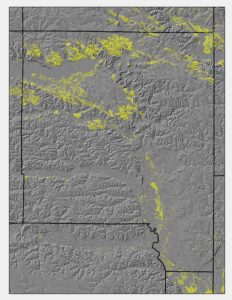Islands, Cores, and Corridors: A History Part I
If you were to attend a meeting of folks whose whole career was conservation – for example at the Society for Ecological Restoration – and asked them to identify the most important piece of research ever done, the replies would be essentially unanimous: the studies of Charles Darwin and of Alfred Wallace, both made public on July 1, 1858, which revealed the origin and extinction of species over geologic time by natural selection. Subsequent generations of researchers have built on their efforts in many dimensions, including genetics, embryology, biochemistry, the fossil record, evolutionary development, and biogeography. For both Darwin and Wallace, islands were especially important in providing the isolation that allowed new adaptations to evolve and, over geologic time, created new species and driving others to extinction.
And if you were to survey for the second most important research, the winning choice would probably be The Theory of Island Biogeography by R.H. MacArthur and E. O. Wilson. They demonstrated that at time scales of decades to centuries, islands are in a shifting balance regarding species. They are subject to losses from extinction and gains from immigration. And in a group of islands with the same geo-climate setting, the smaller islands will support fewer species than the larger ones. And in the face of some dramatic, large-scale environmental change, such as a shift in rainfall or temperature, the large island species mix is more resilient than the small. And if the islands are spread out geographically, those nearer the mainland have a more steady supply of immigrants.
The value of their island research is not limited to chunks of rock surrounded by water. In the southwest USA, there are 51 “sky islands,” which are mountains sticking up out of a hot and dry desert. And while each mountain has more rain and snow and greenery than the desert, much of its flora and fauna is stranded. And in general our rugged mountainous western landscapes have offered more opportunities for long-term species isolation and Darwinian evolution that the eastern two thirds of the country.

Our local sand landscapes
For example, consider chipmunks. From the Atlantic Ocean to the base of the Rocky Mountains, we have one species, the one you are familiar with. But west of that line there are 21 recognized species.
After reading the MacArthur and Wilson book, many conservationists began to realize that they too were working with islands – scattered woodlands surrounded by a sea of row crops, little parks surrounded by a sea of humanity, a stream draining through an industrial complex,… the details vary, but the MacArthur and Wilson pattern remains the same in that smaller islands support fewer species etc, etc.
Just recently we have found another example here in our backyard. Jason Taylor, Bur Oak Land Trust’s property stewardship specialist, found a couple of ornate box turtles on one of the Trust’s properties (see News). This species only lives in native dry prairie in sandy soils. The Johnson County area originally had a belt of sand dunes and sand flats, which supported this habitat in the vicinity of the Iowa River, and another along the Cedar River.
Today almost all of these dry prairies have been plowed under, turtles and all. And some of the few remaining unplowed areas are now densely forested for lack of fire, elk, and bison. So we are down to a couple of tiny islands of suitable habitat. On small and isolated sand dunes, recruitment will be negligible and inbreeding will gradually develop into a problem.
It wasn’t until the early 1990s that a comprehensive concept was organized and published to make these kinds of islands more than an extinction trap; stay tuned for Part II next week when we’ll add cores and corridors.


